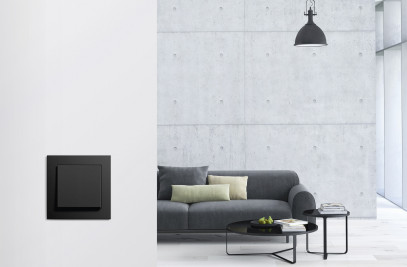Wielerdroom Heusden-Zolder is a multifunctional sports complex with a 250-meter indoor cycling track and central sports fields in Flanders, northeastern Belgium. At 16,000 square meters in size, the project was built on a former race track and is the result of a municipal competition won by Antwerp-based B-architecten in collaboration with local firm dbv architecten.
The building is designed to meet the shape of its trapezoidal and sloped site which forms part of a regional cycling network and walking routes through the surrounding forests. The pill-shaped structure is well-oriented with a clearly visible public front and a logistical rear. It also connects to the existing race track at its side.
The main central fields and track is supported by 1,000 fixed and 1,000 mobile seats encircled by concentric shells filled with secondary program components that include a gymnasium, an exercise lab, a medical center, a cafeteria with terrace, meeting rooms and offices. The complex was designed to be used by recreational, amateur and professional athletes, as well as visitors, logistics and administrative staff, and medical staff. The building enables multiple simultaneous uses with separate circulation flows and is supported by technologies to modulate access control to achieve an efficient, user-friendly and truly multi-purpose building.
A high-performance modular building envelope with high air-tightness and low insulation values, and glazing with a solar gain factor adapted to the building orientation helps the complex to reduce energy costs. Its roof is also fitted with photovoltaic solar panels that have a total capacity of 319 kilowatts peak (kWp).
The design team collaborated with construction partner Machiels Building Solutions to prefabricate the 2750 square meter facade in a circular manner. Sandwich panels are attached with dry connections which make it possible to dismantle and reuse the panels. In places where interaction with the environment is desired, for example at the building entrance, the otherwise opaque facade modules are infilled with glazing, creating accents in the envelope and allow for visual connectivity with the surrounding forests.
The facade elements are constructed with timber frame walls that ensure optimal acoustics within the building. Walls and ceilings are also fitted with sound-absorbing wood wool cement panels. The light roof construction consists of a perforated steel deck with rock wool insulation. To limit noise transmission between the various sports facilities, common dividing walls are duplicated.
As with the facade, the principle of demountable building elements was also applied to intermediate partition walls to permit simple internal reorganization. Concrete precast columns are topped by a steel truss roof structure which can also be dismantled and reused after the life of the building. Instead of working with classic sloping roofs, the roof shape is adapted to a parabolic gradient, leading to a material savings of 24 percent when compared to a classic sloping roof.
In order to be approved by l'Union Cycliste Internationale (UCI) as a highest-class indoor cycling track, particularly strict design conditions were met. Among these is the rigid control of drafts and unwanted air movements to ensure correct time registration in official competitions, posing challenges to balancing indoor air quality with thermal comfort in both summer and winter. Sufficient air exchange is achieved by increasing the ventilation flow rates in workrooms and the continuous monitoring of the building by sensors, which instruct ventilation only when and where necessary.
A number of design elements were realized on site to reduce the building’s impact to the environment. A percolation reed field located at the lowest point of the site functions as an overflow for the rainwater wells, to reinfiltrate rainwater from the particularly large roof back into the soil. Some 170 parking spaces are constructed in plastic grass slabs to limit the amount of paving needed on site. And the recreational park square at the entrance of the complex is constructed as paving with water-permeable joints.





















































